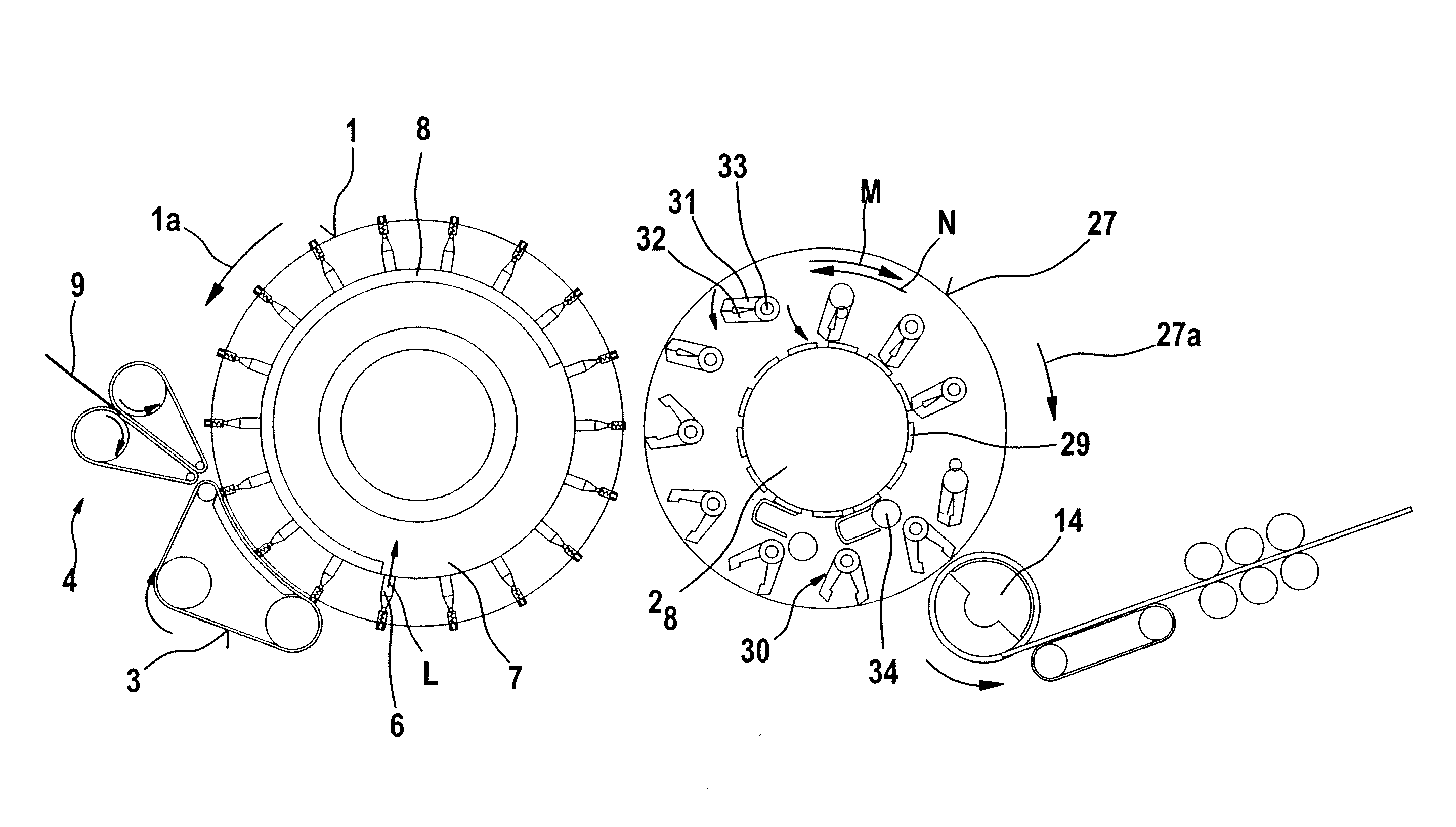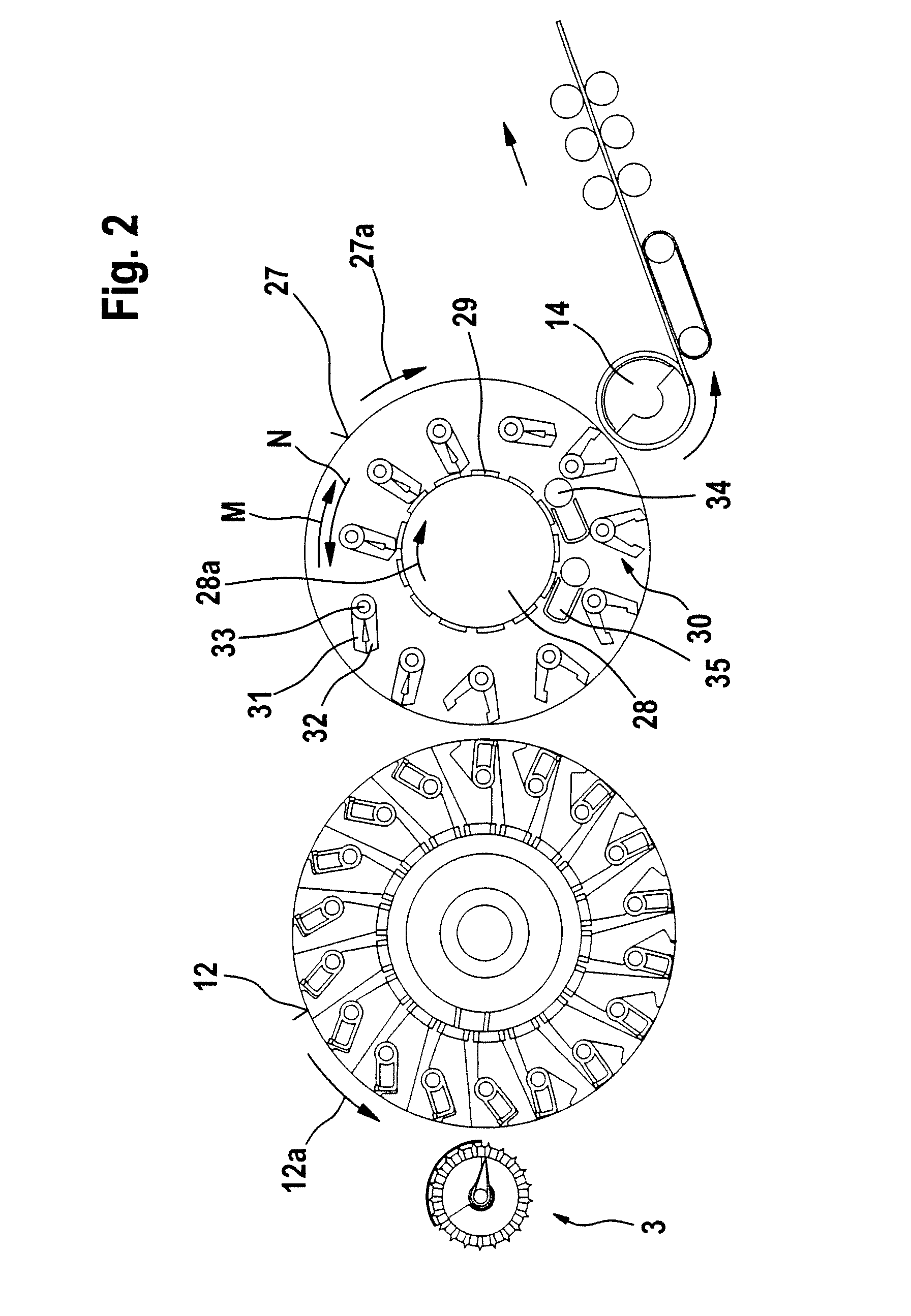Apparatus for the fibre-sorting or fibre-selection of a fibre bundle comprising textile fibres, especially for combing
- Summary
- Abstract
- Description
- Claims
- Application Information
AI Technical Summary
Benefits of technology
Problems solved by technology
Method used
Image
Examples
Embodiment Construction
[0027]FIG. 1 shows a rotor combing machine 2 having a supply device 8, a first roller 12 (turning rotor), a second roller 15 (combing rotor), and a take-off device comprising a take-off roller 14. The directions of rotation of the rollers 12 and 15 are shown by curved arrows 12a and 15a, respectively. The rollers 12, 15 and 14 are arranged one after the other. Arrow A denotes the operating direction.
[0028]Referring to FIG. 1, the rotatably mounted first roller 12 is provided in the region of its outer periphery with a plurality of first clamping devices which extend across the width of the roller 12 and each consist of an upper nipper 19 (gripping element) and a lower nipper 20 (counter-element). In its one end region facing the centre point or the pivot axis of the roller 12, each upper nipper 19 is rotatably mounted on a pivot bearing 24a, which is attached to the roller 12. The lower nipper 20 is mounted on the roller 12 so to be fixed. The free end of the upper nipper 19 faces t...
PUM
 Login to View More
Login to View More Abstract
Description
Claims
Application Information
 Login to View More
Login to View More - R&D
- Intellectual Property
- Life Sciences
- Materials
- Tech Scout
- Unparalleled Data Quality
- Higher Quality Content
- 60% Fewer Hallucinations
Browse by: Latest US Patents, China's latest patents, Technical Efficacy Thesaurus, Application Domain, Technology Topic, Popular Technical Reports.
© 2025 PatSnap. All rights reserved.Legal|Privacy policy|Modern Slavery Act Transparency Statement|Sitemap|About US| Contact US: help@patsnap.com



